|
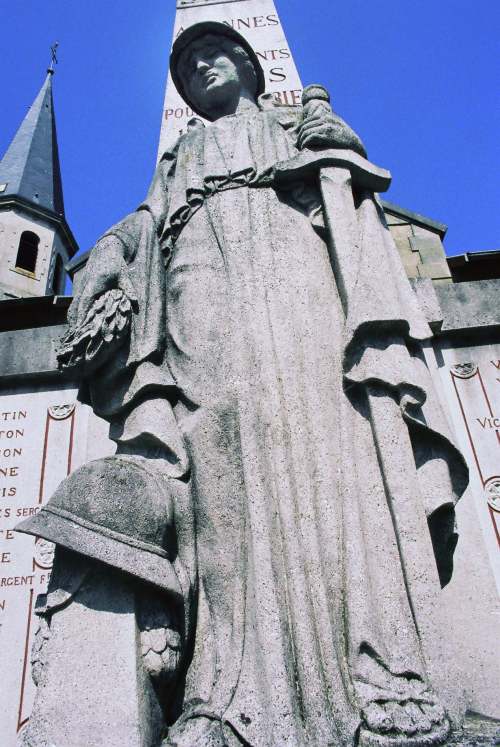 |
Azannes-et-Soumazannes
(Meuse) In the 19th century and the beginning of the
20th century women played an allegoric role in
French sculpture.
This type of sculpture inspired artists who were
commissioned to build war monuments. |
|
|
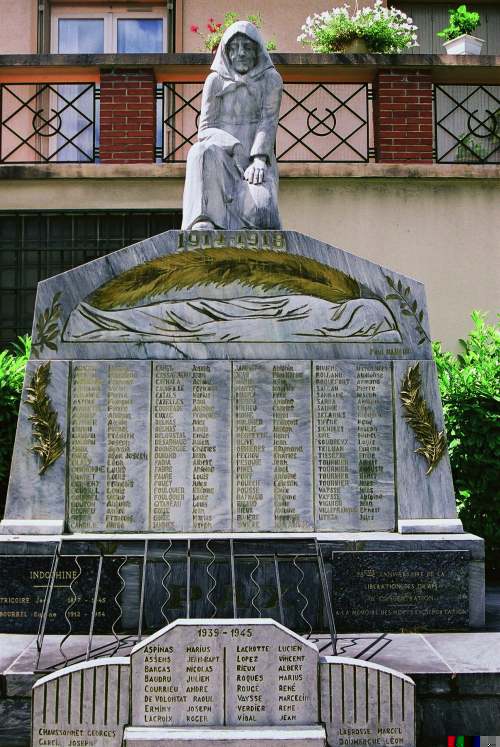 |
|
Quillon (Aude) |
|
|
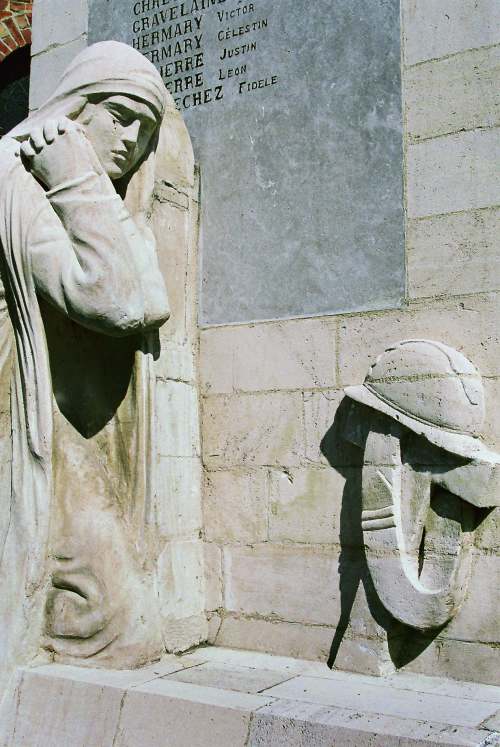 |
St. Floris (Pas-de-Calais)
Also ordinary women, especially widows,
got a prominent place on the socles to worship their
husbands. |
|
|
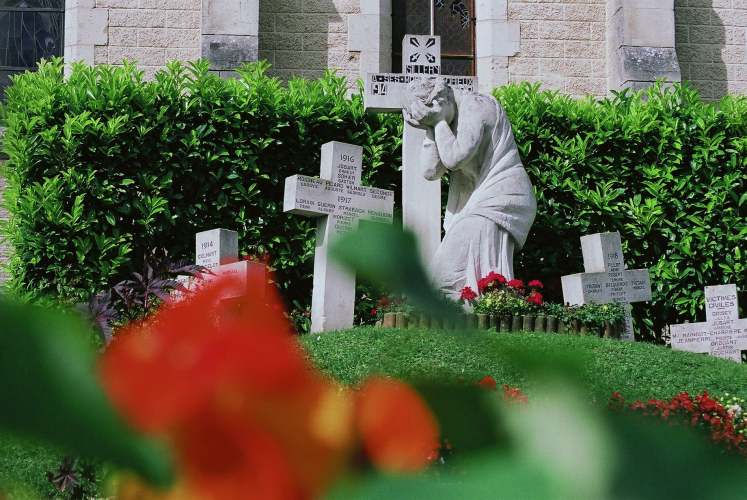 |
|
Sillery (Marne) The
painful reality almost left no space to honour
heroism, courage and victory. |
|
|
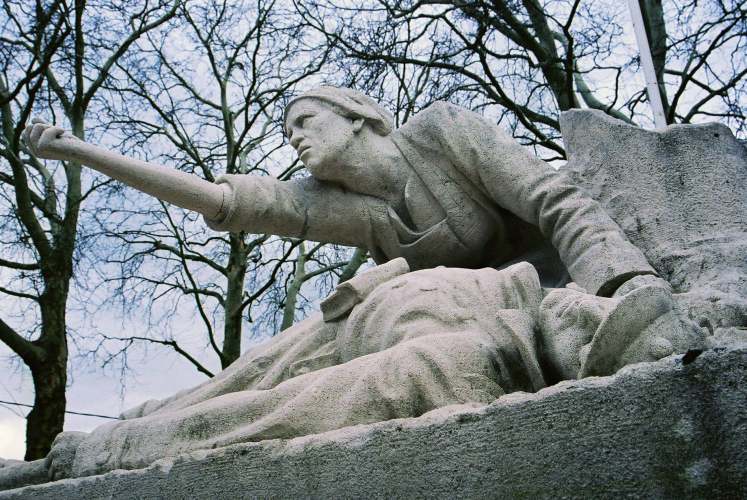 |
|
Péronne (Somme)
Some sculptors, like Paul Auban, gave their
monuments a taste of hatred and anger. |
|
|
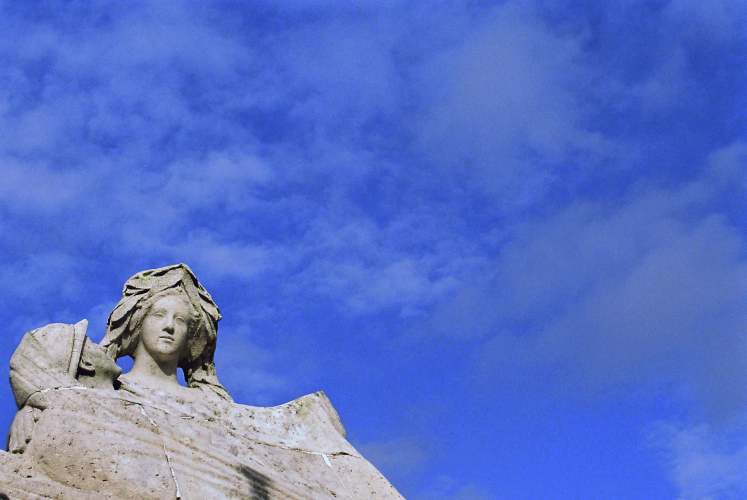 |
|
Langres (Haute-Marne)
The artists chose a classical approach. |
|
|
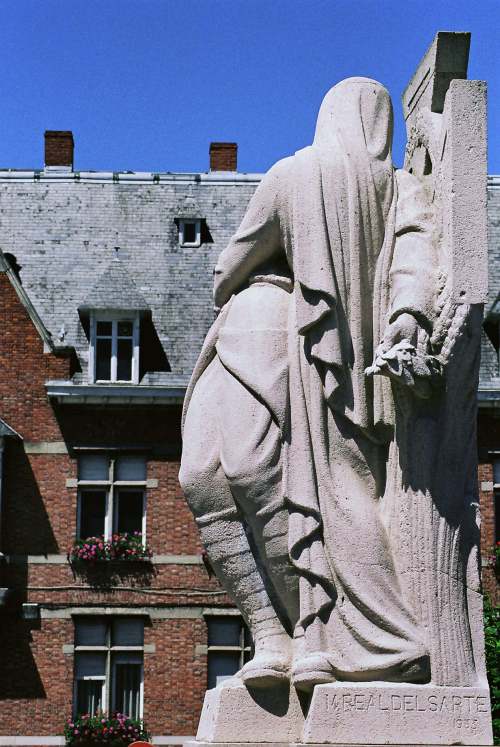 |
Laventie (Pas-de-Calais)
You can categorize war monuments in all kinds of
ways.
Many monuments represent the Piëta. A dead or dying
soldier held by
a mourning wife or mother. A pietà is inspired by
the mother Mary and the dead Christ. |
|
|
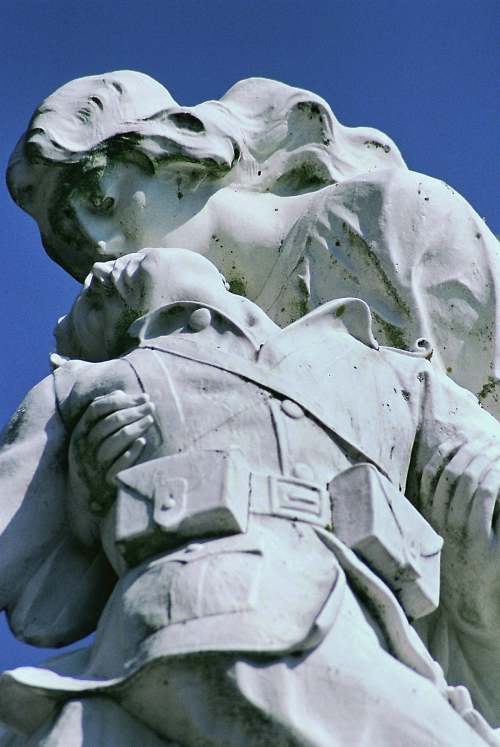 |
|
Aire-sur-la-Lys
(Pas-de-Calais) |
|
|
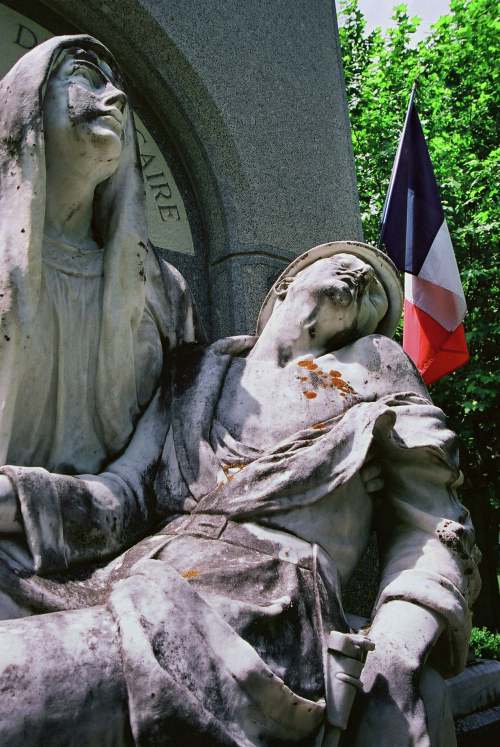 |
|
Belcaire (Aude) |
|
|
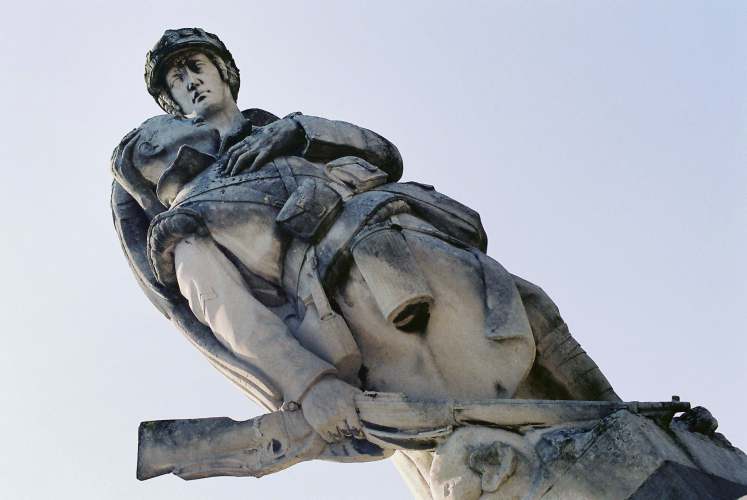 |
|
Stenay (Meuse) |
|
|
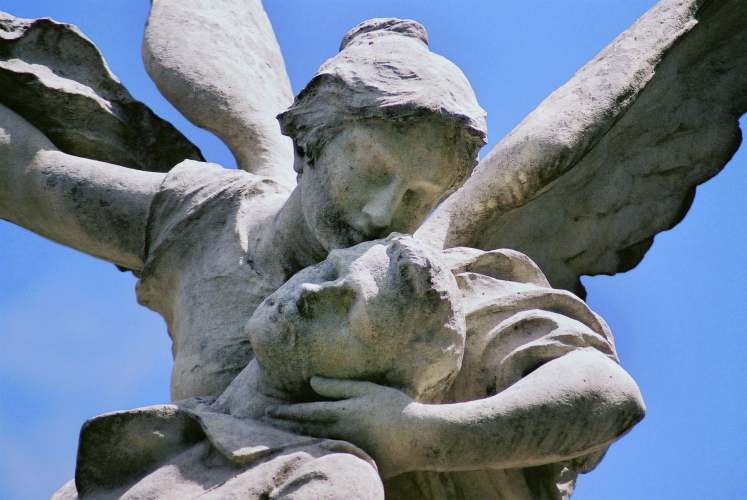 |
|
Roquemare (Gard)
Sometimes a victorious angel replaces the widow or
mother. |
|
|
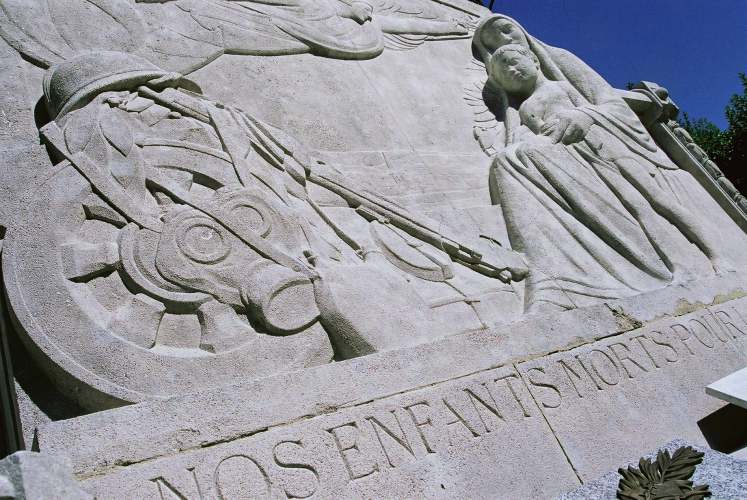 |
|
Signy-sur-l'Abbeye
(Ardennes) Marianne, symbol of the French Republic,
suspended in the air. |
|
|
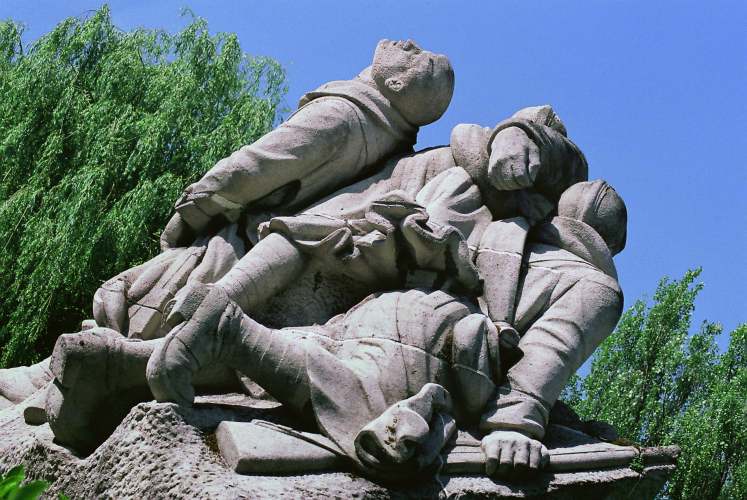 |
Steenwerck (Nord)
The Steenwerck monument shows a dramatic scene.
Soldiers in full combat
stumble over each other |
|
|
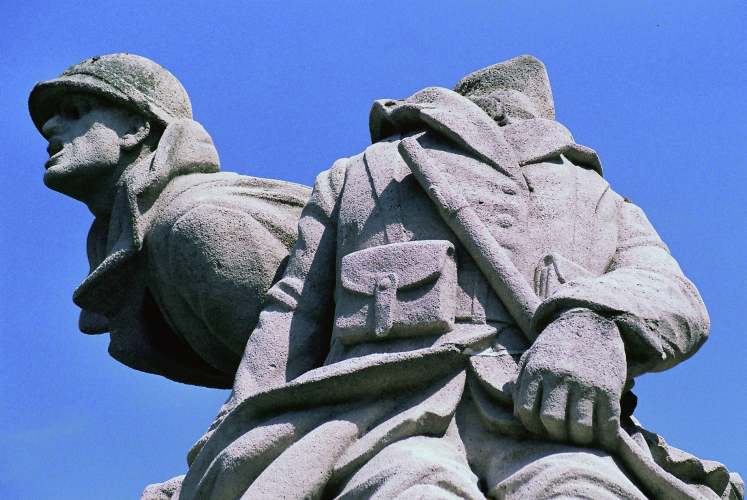 |
Steenwerck (Nord)
Monuments show the soldier's courage, their
patriotism, but also their pain,
struggle and defeat. |
|
|
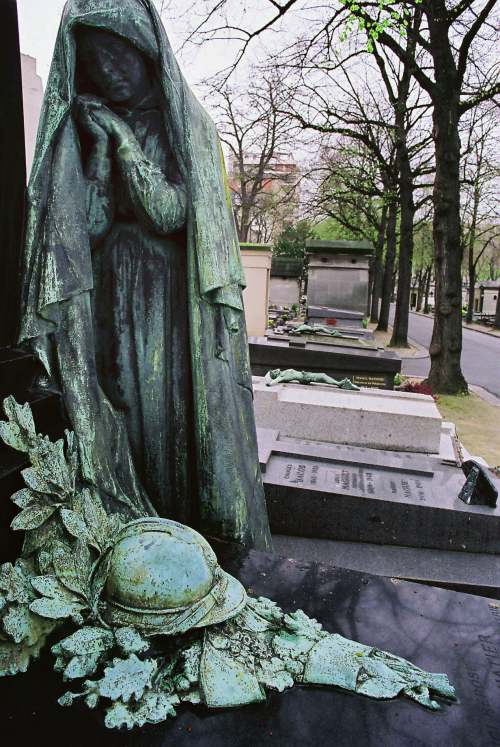 |
Paris (Ville-de-Paris)
The French Adrian helmet (Casque Adrian) as a symbol
of the fallen soldier. |
|
|
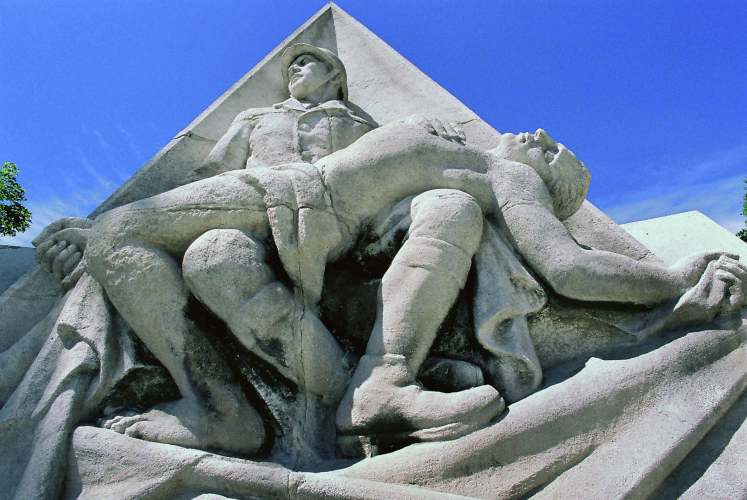 |
La Targette (Pas-de-Calais)
A pietà representing two soldiers. The monument in
has been
erected for Czech volunteers. |
|
|
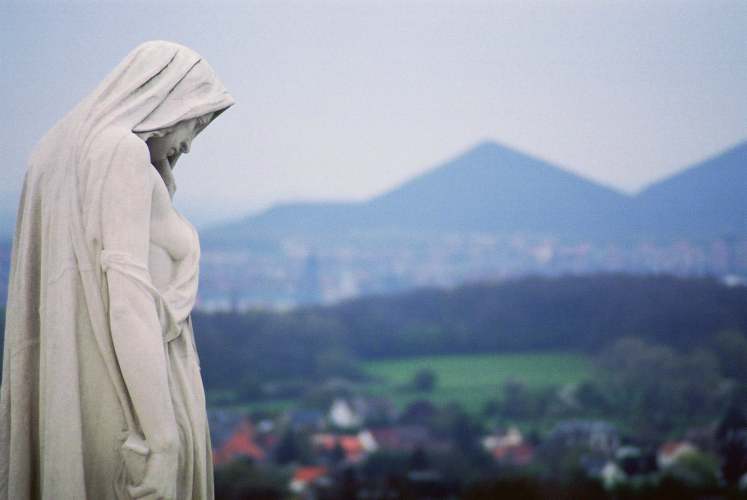 |
Vimy (Pas-de-Calais)
Because of its size and architecture one of the most
impressive war monuments
in France. It's erected on the Vimy Ridge. The front
of the Monument
commémoratif du Canada is
dominated by a mourning woman. |
|
|
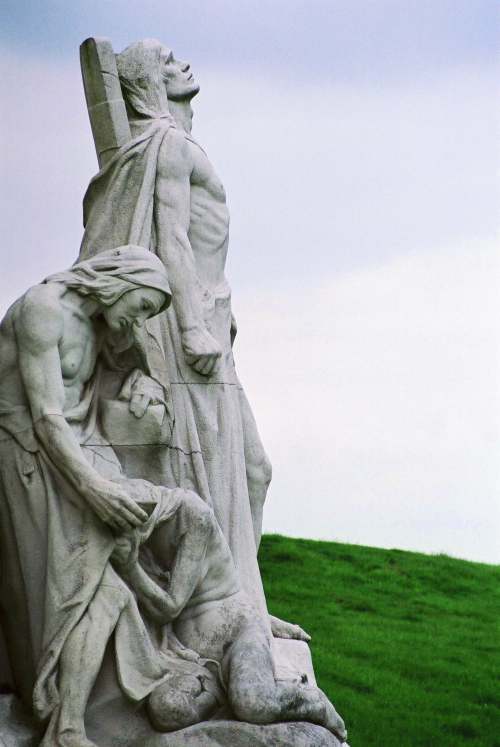 |
Vimy (Pas-de-Calais)
Group of statues entitled: sympathy for the victims.
Part of the Vimy monument. |
|
|
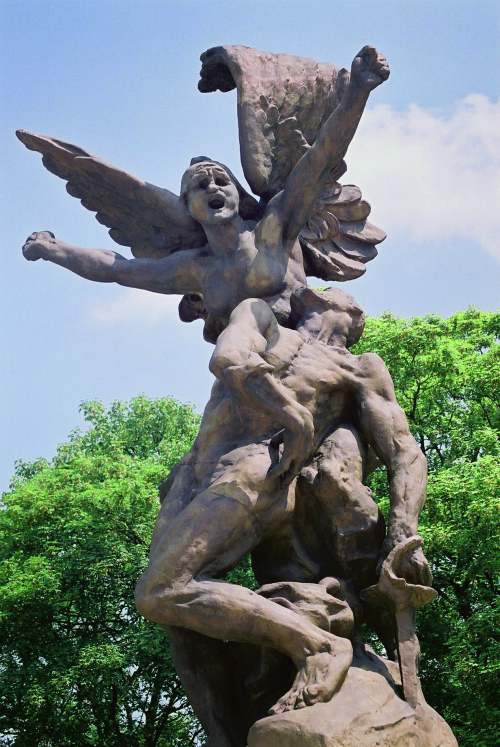 |
Verdun (Meuse) In
1916 the Dutch department of the Union of Neutral
Countries
commissioned Auguste Rodin to make a sculpture for
the glory of France. |
|
|
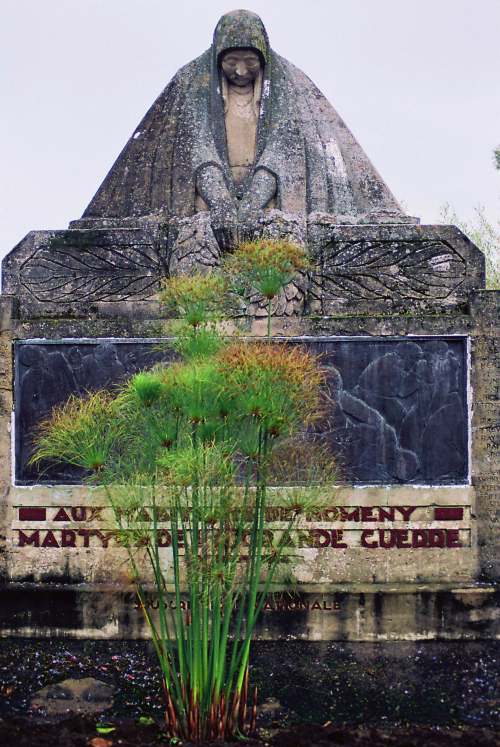 |
Nomeny (Meurthe-et-Moselle)
Several monuments do not only
commemorate military casualties, but also civilian
victims. |
|
|
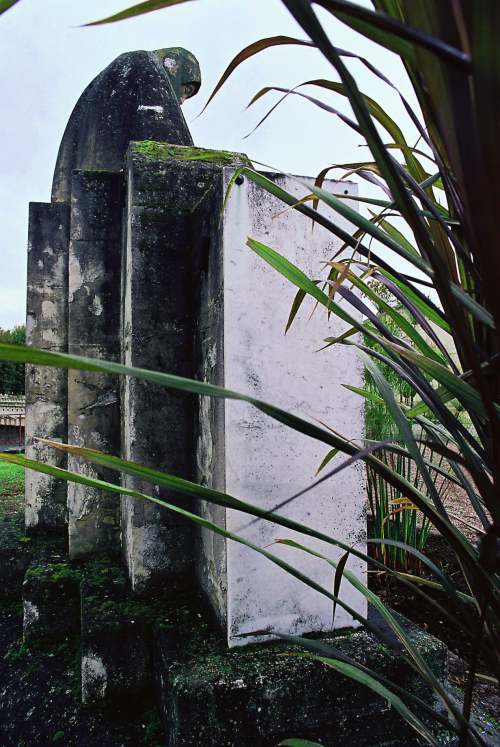 |
|
Nomeny
(Meurthe-et-Moselle) |
|
|
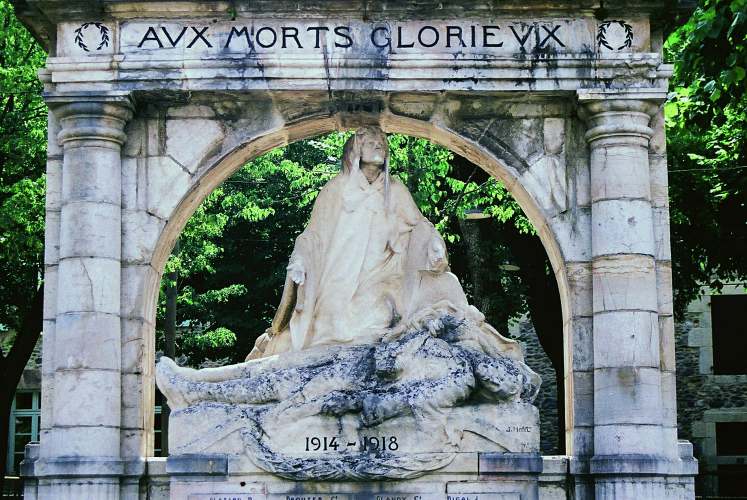 |
Saint-Geniez-d'Olt
(Aveyron) No doubt that Catholic communities would
like to
decorate their monuments with a religious cross (notice
the woman embracing a cross). |
|
|
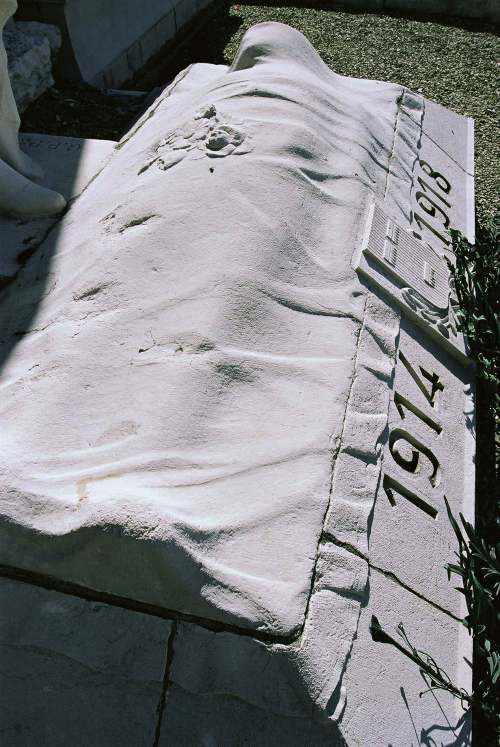 |
|
Rethel (Argonne)
The monuments are empty, the dead are buried in
local and war cemeteries. |
|
|
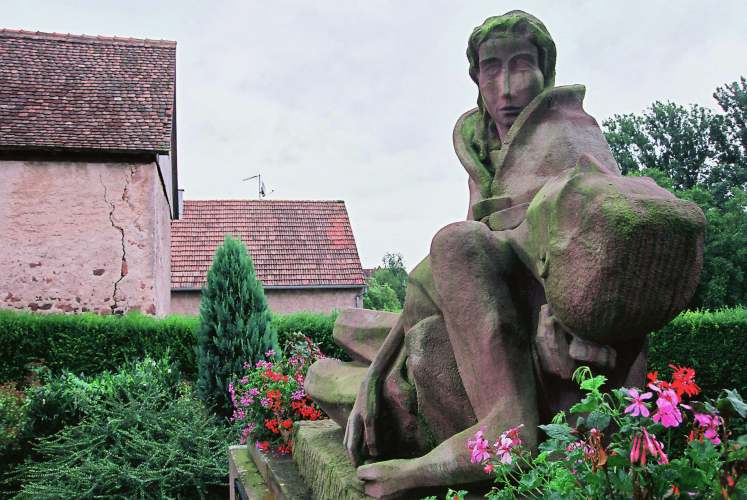 |
|
Oberhaslach (Bas-Rhin)
Pietà in the the Bas-Rhin department. |
|
|
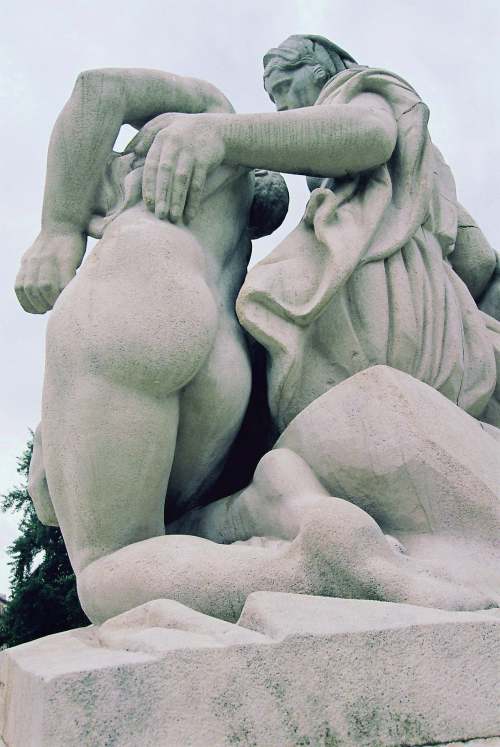 |
Strasbourg (Bas-Rhin)
The monument of Strasbourg, on the Place de la
République
can be considered as an effort tot reconcile France
and Germany. |
|
|
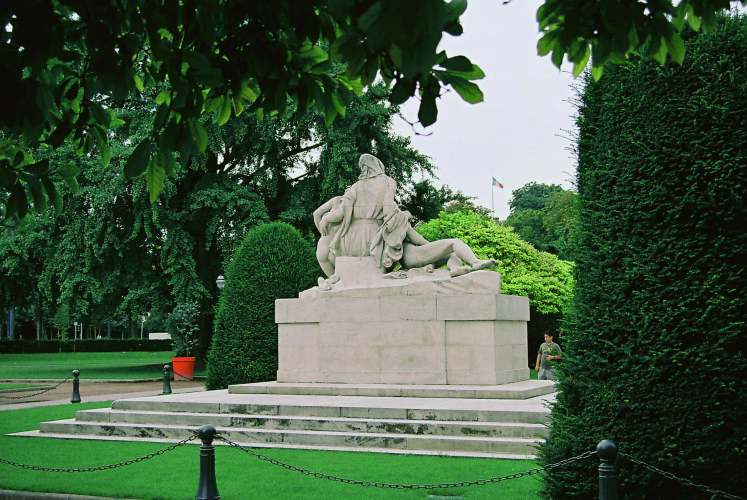 |
|
Strasbourg (Bas-Rhin)
|
|
|
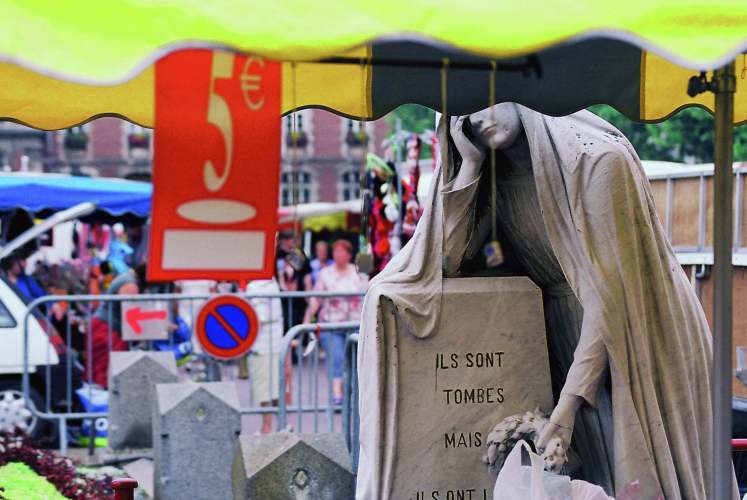 |
Arques (Pas-de-Calais)
Citizens take no notice of the war monument on
market day.
The merchants build their stands around it. |
|
|
Check out the books Aux Morts
and Aux Poilus by Waldemar Ysebaert:
Aux morts
1914-1918 / Aux Poilus 1914-1918
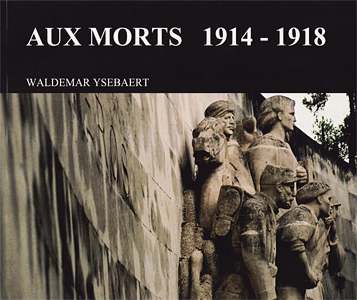 |
|